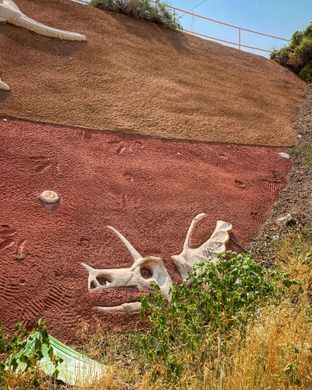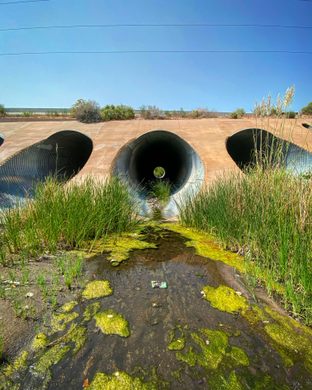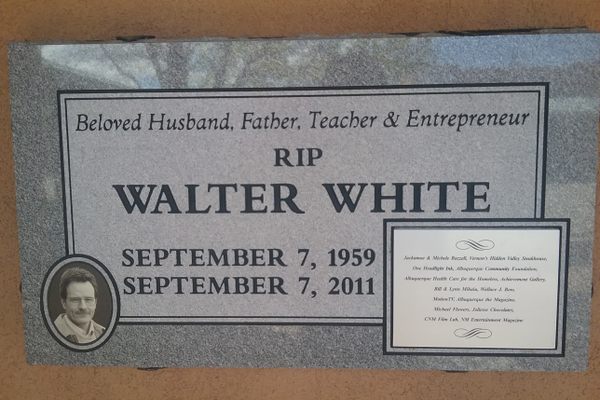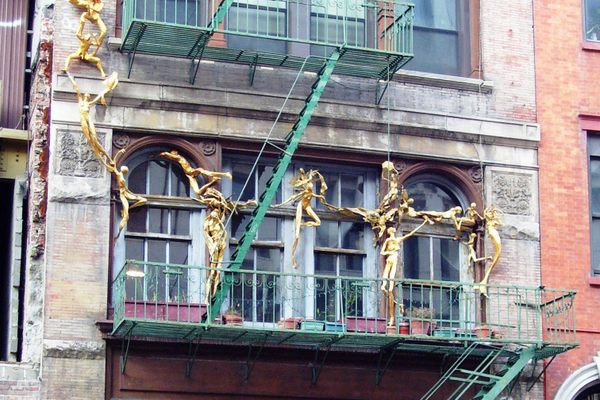Calabacillas Arroyo Artificial Fossils
From a T-rex to a teapot, a cast of artificial fossils illustrates New Mexico's history.
Created by artist Michael Wallace and a team of around 300 volunteers and school students, the artificial fossils of Calabacillas Arroyo is a large-scale art installation in Albuquerque. Inspired by the way that buried fossils serve as a timeline of natural history, it serves as an interpretive timeline of New Mexican history from the Precambrian era through the unknown tomorrow.
The arroyo itself is an important flood-control structure that empties into the Rio Grande as well as a major public open space in the city. The addition of the artwork in the ’90s, which is designed to be an “open space scavenger hunt,” led to the arroyo’s current motto of “Flood Control, Open Space, and Art.” In the arroyo, you’ll find life-sized T-Rexes and triceratops alongside human artifacts of local history, including Robert Oppenheimer’s car and the “Fat Boy” atomic bomb (a nod to the nuclear research at nearby Los Alamos).
While the most obvious fossils are cast in white, don’t miss more subtle features impressed and carved into the red walls. Take your time and stay curious while exploring this walking tour of New Mexico history.
Know Before You Go
Finding the trail can be tricky. Head north on Coors Blvd NW (north of Irving), take a right on Westside Blvd NW. The entrance is on the left, where Westside Blvd intersects with Riverfront Drive. Follow the access road to the right to the parking area.
Safety in the arroyo is subject to weather conditions. Be cautious of heavy rainfall as the channel can flood quickly.
There is no fee and no shade.





















Follow us on Twitter to get the latest on the world's hidden wonders.
Like us on Facebook to get the latest on the world's hidden wonders.
Follow us on Twitter Like us on Facebook